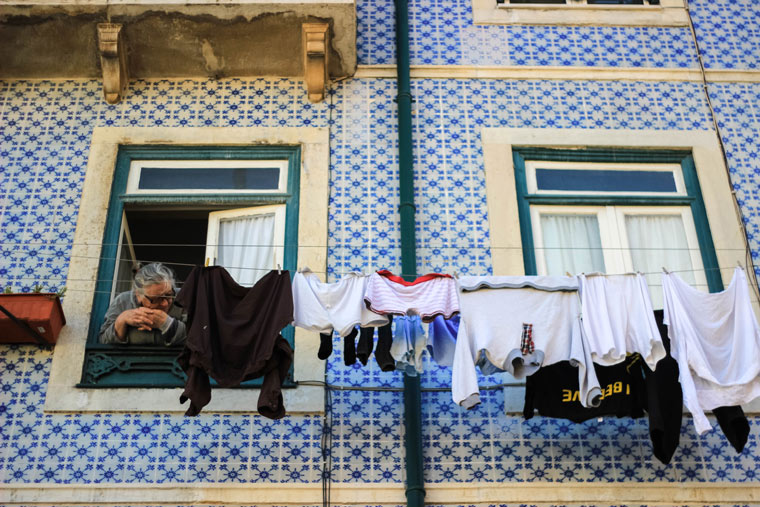“Let’s walk this way!”, Edgar says as we leave behind the Intendente square and head towards Mouraria…
At a first glance, I realize I never walked this street before. This street that leads to another one, bumpier than in other quarters, but pleasantly exotic.
I would have remembered the smell in the air filled with…curry and all spices. I would have remembered this feeling of being in another city, on another continent. We see a few shoppers staring at us as we walk by. In between all the noise, we can’t grasp any Portuguese word…only within the invitation to lunch in this or that restaurant. We spot a phrase on a wall in various languages – Food is culture. One Bangladesh restaurant has handwritten dishes displayed on the door. Everything low-priced. The waiter invites us in. Edgar remembers some clients that were accommodated in this area and recommended a restaurant, but he doesn’t remember the name which leaves us guessing. The next restaurant smells the same, but it’s Nepalese. A few meters ahead a Chinese supermarket. Then we come across a shop with hand-made scarfs and shoes. The colors shouting from the inside say it all…it’s Indian.
The medieval cobbled streets turn quieter as we climb the hill. We stop countless times to idle and just enjoy the moment…Where are we?
Suddenly a mural art depicting Amalia, the iconic fado singer, comes into sight. A few blocks away an inconic contemporary fado singer, Mariza, is represented on another mural. I understand from my guide and fiancé, Edgar, that it is here that fado, UNESCO’s world heritage Portuguese music style, was born. Nowadays, various taverns host live outdoor Fado concerts for the locals and tourists.
There is Alfama, there is São Jorge Castle and then there is Mouraria, Lisbon’s medieval multicultural district, with communities from India, China, Pakistan, Bangladesh, Cape Verde, Mozambique to name but a few.
Mouraria, as the name suggests, derives from “the moors”, the first inhabitants after Lisbon’s Christian reconquest. Along with Alfama, these are the two areas that survived the earthquake of 1755.
In 2009, the town hall initiated a project aimed to restore the neighbourhood’s buildings and streets, integrate the locals with the immigrants and finally, attract more tourists. Which reminds us of how good if feels to be a tourist in your own city…:)
Among these initiatives to put Mouraria on Lisbon’s map is Martim Moniz square, where you can eat food from all over the world, a concept known as Mercado Fusão that has been more and more in the spotlight. There is also Intendente, that has also seen a surprising makeover, of which we will particularly talk in another post.
Old taverns, old fado houses, tiled buildings, idyllic winding alleys, excellent local restaurants (and keenly priced!), not touristic (yet)…you have plenty of reasons to hang around in Mouraria.
Restaurants recommended in Mouraria:
Zé da Mouraria (old tavern)
Zé dos Cornos (old tavern)
O Cantinho do Aziz (Mozambican)
Tentações de Goa (Indian)
































































